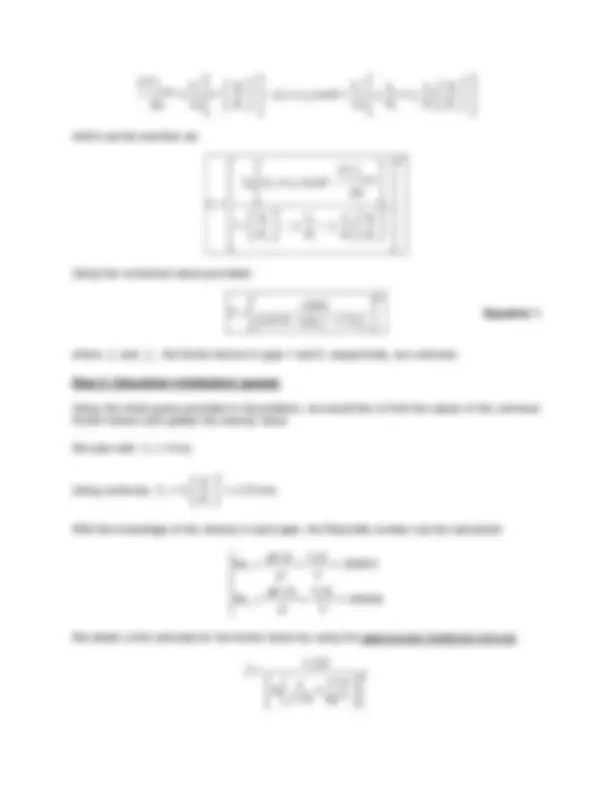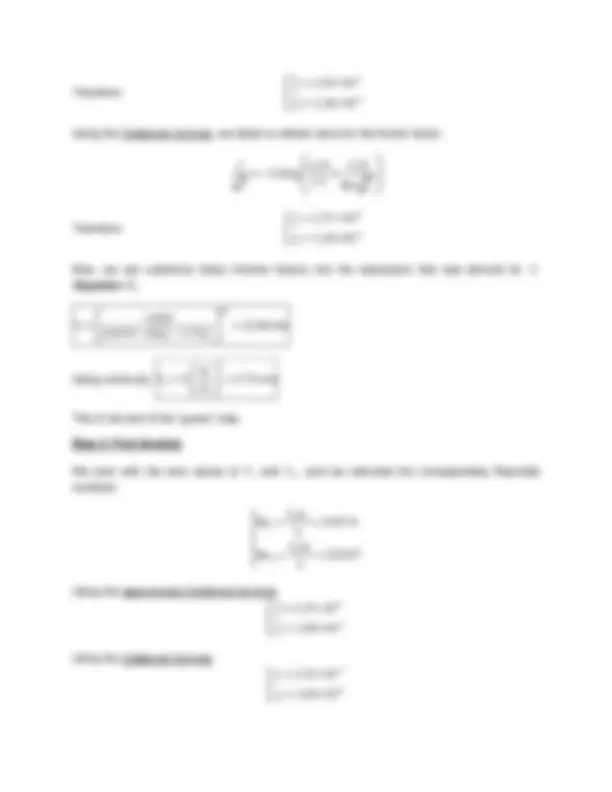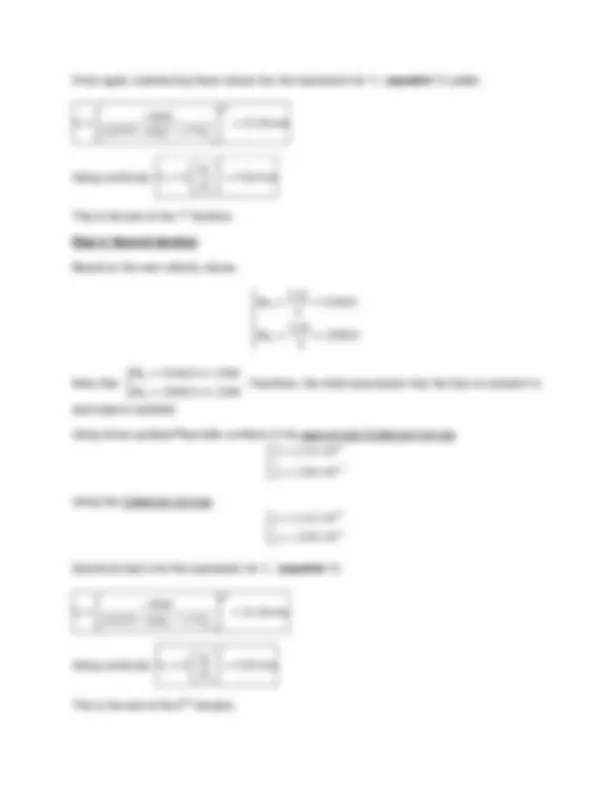





Study with the several resources on Docsity

Earn points by helping other students or get them with a premium plan


Prepare for your exams
Study with the several resources on Docsity

Earn points to download
Earn points by helping other students or get them with a premium plan
Community
Ask the community for help and clear up your study doubts
Discover the best universities in your country according to Docsity users
Free resources
Download our free guides on studying techniques, anxiety management strategies, and thesis advice from Docsity tutors
Material Type: Notes; Professor: Sucosky; Class: Fluid Mechanics; Subject: Aerospace and Mechanical Engr.; University: Notre Dame; Term: Fall 2009;
Typology: Study notes
1 / 6

This page cannot be seen from the preview
Don't miss anything!




AME 30331 – Fall 09
EXAMPLE PROBLEM: PIPE FLOW AND ENERGY LOSS
A pump delivers water (
3
3 ,
6
m
2 /s) at a gage pressure P 1 (^) 550 kPa
an angle 30 with respect to the horizontal. The characteristics of the pipes are:
L 1 (^) L 2 3 m; D 1 (^) 2.5cm; D 2 (^) 5.0cm.
Determine the velocity of water being ejected to the atmosphere at the upper end, ignoring
minor losses.
Hint: since the velocity is to be determined, this problem requires you to use iterations. Use a
first guess of V 1 (^) 9 m/s for the speed in the smaller-diameter pipe and perform two additional
iterations. Does the process appear to be converging?
Step 1: Deriving an expression for the velocity in the pipe
Start with the energy equation between the entrance of the first pipe and the exit of the second
pipe:
2 2 1 1 2 2 1 2 2 2
L
z z h
nearly uniform velocity profile in each pipe (i.e., V 1 (^) V 1 and V 2 (^) V 2 ).
The head loss term must be decomposed into a head loss in pipe 1 and a head loss in pipe 2:
1 2
2 2 1 1 2 2 1 2 1 2 22
L L L
h h h f f D g D g
Therefore, the energy equation can be rewritten:
2 2 1 2 2 2 1 1 2 2 1 2 1 2 1 2 1 2
V V z z f f
pump
P P P (i.e., gage pressure delivered by the pump)
Therefore, the previous equation can be simplified as:
2 2 (^2 2 1 1 2 ) 1 2 1 2 1 2 1 2
sin 2 2 2
P g (^) pump L V L V V V L L f f g g D g D g
Instead of expressing this relation in terms of two different velocities V 1 and V 2 , we can use
conservation of mass to keep only one unknown velocity.
Continuity: Q 1 (^) Q 2
AV 1 1 (^) A V 2 2
2 1 2 1 2
Substituting back into the energy equation:
Therefore:
2 1 2 2
f
f
Using the Colebrook formula, we obtain a refined value for the friction factor:
2.0log 3.7 (^) Re
f (^) f
Therefore:
2 1 2 2
f
f
Now, we can substitute these frictions factors into the expression that was derived for V 1
( Equation 1 ).
1 2
1 1 2
f f
m/s
Using continuity:
2 1 2 1 2
m/s
This is the end of the “guess” step.
Step 3: First iteration
We start with the new values of V 1 and V 2 , and we calculate the corresponding Reynolds
numbers:
1 1 1
2 2 2
Re 510714
Re 255357
Using the approximate Colebrook formula:
2 1 2 2
f
f
Using the Colebrook formula:
2 1 2 2
f
f
Once again, substituting these values into the expression for V 1 ( equation 1 ) yields:
1 2
1 1 2
f f
m/s
Using continuity:
2 1 2 1 2
m/s
This is the end of the 1
st iteration.
Step 4: Second iteration
Based on the new velocity values:
1 1 1
2 2 2
Re 519643
Re 259821
Note that:
1
2
Re 519643 2300
Re 259821 2300
. Therefore, the initial assumption that the flow is turbulent in
each pipe is satisfied.
Using those updated Reynolds numbers in the approximate Colebrook formula:
2 1 2 2
f
f
Using the Colebrook formula:
2 1 2 2
f
f
Substitute back into the expression for V 1 ( equation 1 ):
1 2
1 1 2
f f
m/s
Using continuity:
2 1 2 1 2
m/s
This is the end of the 2
nd iteration.